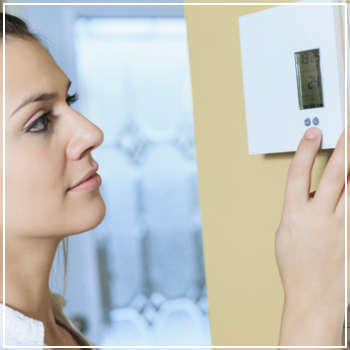Is Your Thermostat Broken?
 While thermostats don’t have a specific lifespan, a typical device lasts about 10 years before showing signs of wear and tear. The malfunction could be caused by something as simple as dust accumulation or an issue like old, loose wiring.
While thermostats don’t have a specific lifespan, a typical device lasts about 10 years before showing signs of wear and tear. The malfunction could be caused by something as simple as dust accumulation or an issue like old, loose wiring.
This can happen to both traditional thermostats and new programmable models. The former uses a coil created by two separate metals that expand or contract with the temperature. This motion activates the contacts on one or both sides, causing a switch to lean to the heating or cooling side.
An electronic thermostat is simpler in operation but contains multiple components that can wear out or break. In either case, the following signs indicate your thermostat may need to be repaired or replaced.
Device Has No Power
When you change the temperature and the thermostat doesn’t respond or the display fails to illuminate, power has been drained from the device. Consider replacing the batteries and trying again, before officially declaring the thermostat broken.
System Won’t Turn On or Off
The inability to turn the heating or cooling on or off can be caused by a wiring issue. In this instance, the electrical signal is cut off before it reaches the heating or cooling system. The wire itself could be physically frayed or the device might have a calibration issue.
If the thermostat reads one temperature but the room feels warmer or cooler, it’s likely the wires are not signaling the correct temperature. In any case, further investigate:
- The power source – a blown fuse, tripped breaker or dead battery could be interrupting the connection.
- The thermostat’s interior components – a loose screw could be affecting operation. Turn off the power source before removing the box to check for loose or corroded wires and other damage.
- If there’s a clicking sound – with most thermostats, you’ll hear this once the heater or cooling equipment starts. If you’ve replaced the batteries and no longer hear the sound, it may be time for a new thermostat.
Adjustments Don’t Resolve the Issue
Before you throw in the towel, do some low-level troubleshooting. To determine if your thermostat is truly broken, take the following steps:
- Replace the batteries. Especially with electronic thermostats, sluggish or no operation often comes down to an old or dying battery.
- Clean the thermostat. Dust can build up inside around wires, coils and the lever. Consider removing the cover to dust off the interior parts.
- Adjust the device so it’s level. If the box is off center, the internal components may be affected.
- Examine the location. Drafts from windows and doors and sunlight both affect how a thermostat regulates temperature.
- Consult the owner’s manual. The anticipator may not be set correctly and, while moving the lever back and forth helps, you may need to set the device to the furnace’s ampere setting.
Thermostat Loses Pre-Programmed Settings
If your electronic thermostat cannot hold its settings for more than a few days and you have already replaced the batteries, the device is likely on the way out.
When you thermostat stops working and troubleshooting doesn’t help, contact the HVAC professionals at MJ Fahy & Sons to address the issue. To schedule an appointment, give us a call today.




